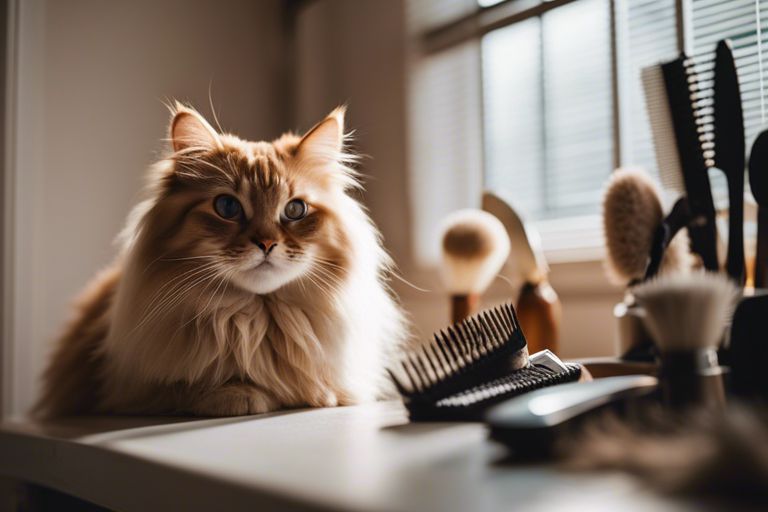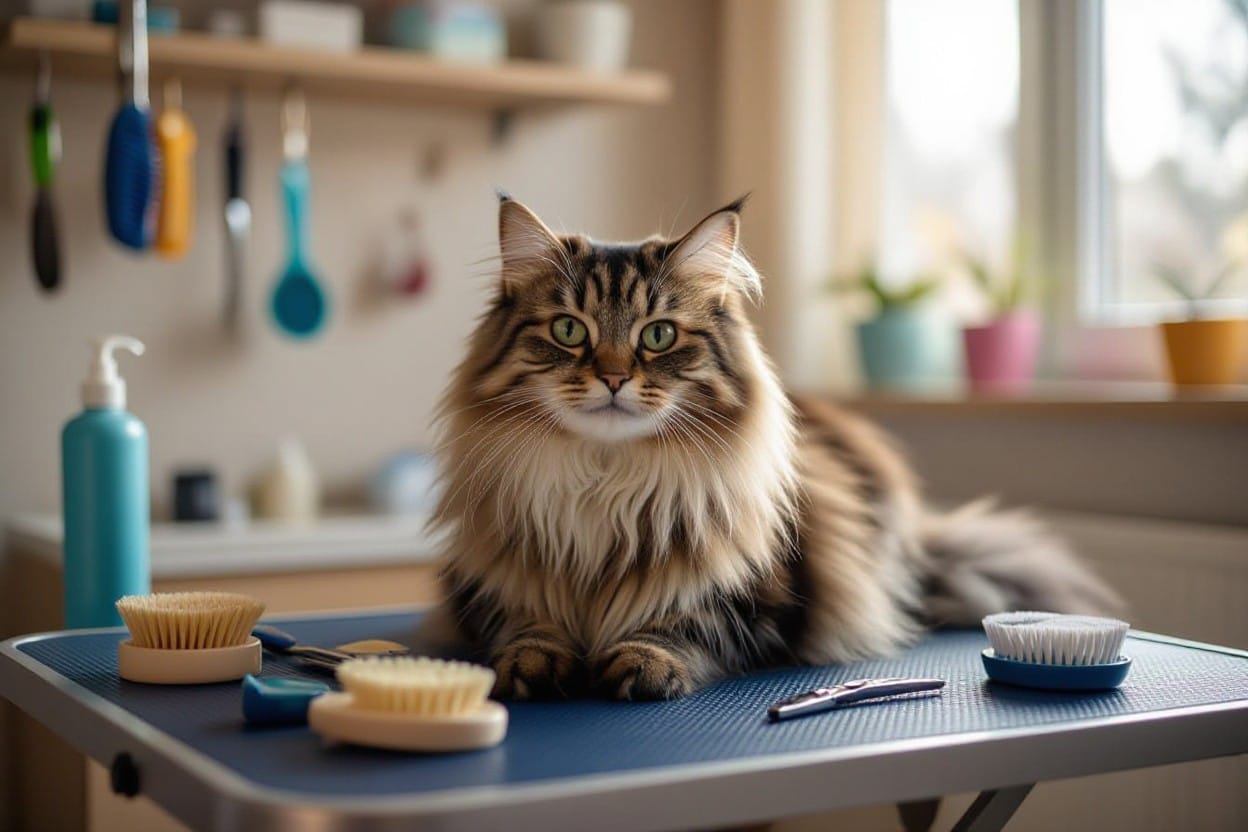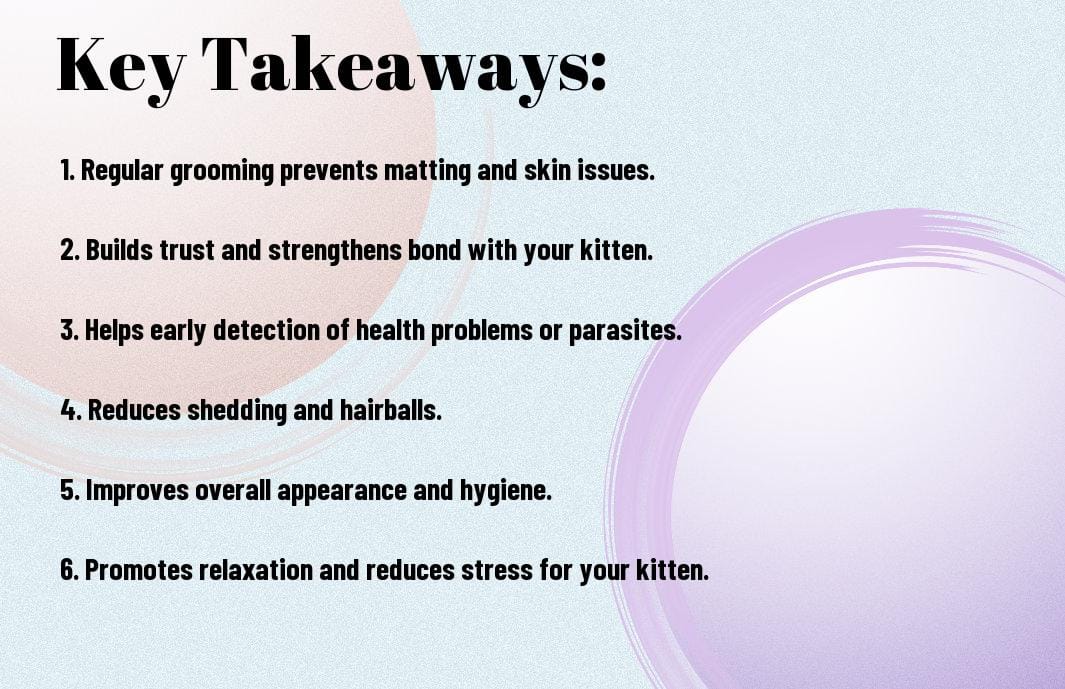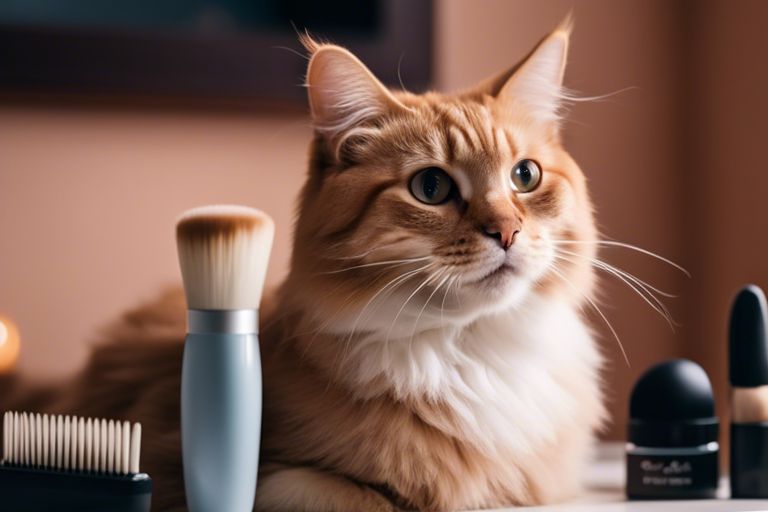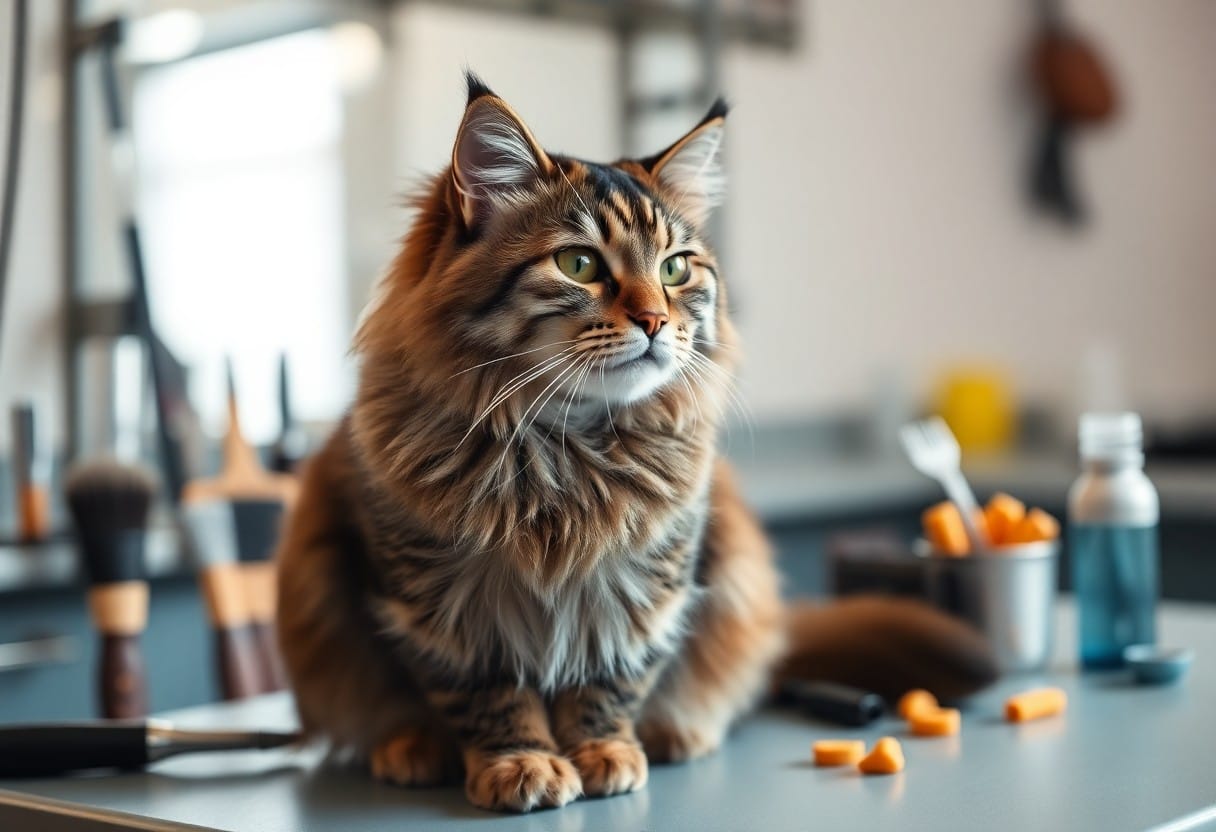Benefits of regular grooming for your cat are not only aesthetic but also crucial for their overall health and well-being. Proper grooming helps to prevent matting, reduce shedding, and can uncover any skin issues or abnormalities early on. In addition to keeping your feline friend looking their best, regular grooming sessions provide an opportunity to check for parasites, lumps, or injuries that may go unnoticed otherwise. With a consistent grooming routine, you can ensure that your cat stays happy, healthy, and comfortable.
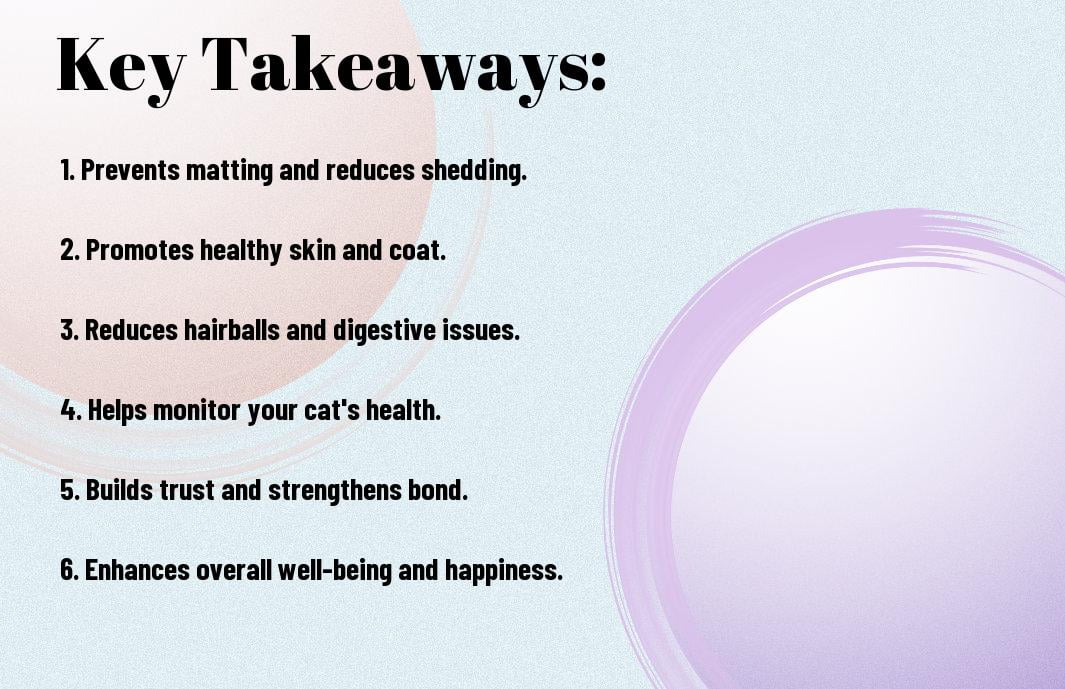
Basics of Feline Grooming
Even though cats are known for being fastidious groomers themselves, regular grooming by their human caregivers is still important. Grooming not only helps keep your cat’s coat clean and free of mats, but it also allows for a closer inspection of your cat’s skin and overall health.
What Does Cat Grooming Involve?
One of the main tasks involved in cat grooming is brushing your cat’s coat to remove loose hair and prevent tangles. Additionally, you may need to trim your cat’s nails, clean their ears, and brush their teeth regularly to maintain their overall health and well-being.
Tools and Equipment for Effective Grooming
Tools and equipment for grooming your cat may include a slicker brush or comb for removing loose hair, a nail clipper designed for cats, ear cleaning solutions, and a cat-specific toothbrush and toothpaste. These tools are vital for keeping your cat clean and healthy.
To ensure the grooming process is as stress-free as possible for your cat, it’s important to choose tools that are specifically designed for cats and to introduce grooming gradually from a young age.
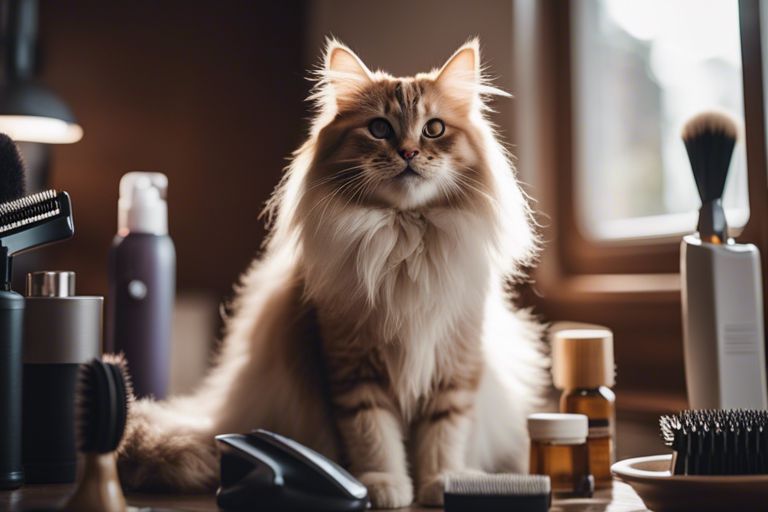
The Psychological Benefits of Regular Grooming
The act of grooming your cat goes beyond just physical maintenance; it also provides a range of psychological benefits for both you and your feline companion. Regular grooming sessions can contribute to a healthier and happier relationship between you and your cat.
Strengthening the Bond Between You and Your Cat
One of the primary psychological benefits of regular grooming is that it helps strengthen the bond between you and your cat. Cats are social animals that form strong attachments to their caregivers, and grooming provides an opportunity for you to spend quality time together. Through grooming, you can develop a deeper connection with your cat and build trust, leading to a more harmonious relationship.
Reducing Stress and Anxiety in Cats
For cats, grooming is not just about cleanliness; it is also a way to reduce stress and anxiety. Regular grooming helps to remove loose fur, dirt, and debris from your cat’s coat, preventing matting and tangles that can cause discomfort. Additionally, the act of grooming can be soothing for cats, as it mimics the grooming behaviors they engage in with other felines in their social group.
Understanding the importance of grooming in reducing stress and anxiety in cats can lead to a happier and healthier pet. By incorporating regular grooming into your cat’s routine, you can help them feel more relaxed and secure in their environment, ultimately improving their overall well-being.
Physiological Advantages of Grooming
Skin and Coat Health
To maintain a healthy skin and coat, regular grooming is necessary for your cat. Brushing helps to distribute natural oils produced by the skin, keeping the coat shiny and reducing the risk of matting. It also stimulates blood flow, promoting a healthier skin underneath the fur. Additionally, grooming allows you to detect any skin issues or abnormalities early, ensuring prompt veterinary attention if needed.
Prevention of Parasites and Related Diseases
Physiological benefits of grooming extend to preventing parasites such as fleas and ticks. Regular grooming sessions give you the opportunity to check for parasites or signs of infestation. Grooming also helps to remove dirt and debris that may harbor parasites and prevents them from proliferating on your feline companion.
With proper grooming, you can significantly reduce the risk of your cat contracting diseases transmitted by parasites. Fleas and ticks not only cause discomfort and skin irritation but can also transmit serious illnesses. By diligently grooming your cat, you are taking proactive measures to safeguard their overall health and well-being.
The Impact of Regular Grooming on General Cat Health
Early Detection of Health Issues
Health issues can often go unnoticed in cats, especially in the early stages. Regular grooming sessions provide the perfect opportunity to closely examine your cat’s skin, coat, eyes, ears, and teeth. By routinely checking these areas, you can quickly identify any changes or abnormalities that may indicate a potential health problem. Detecting issues early can lead to prompt treatment and better outcomes for your cat’s overall health.
The Role of Grooming in Weight Management
Issues related to weight management are common in cats and can lead to various health problems such as diabetes, joint issues, and heart disease. Regular grooming sessions not only help in keeping your cat’s coat clean and free from mats but also provide insight into their body condition. By monitoring your cat’s weight and body shape during grooming sessions, you can better assess if they are at a healthy weight or if any adjustments need to be made to their diet or exercise routine.
Regular grooming sessions can also help in promoting circulation and reducing stress, which can contribute to maintaining a healthy weight for your cat.
Grooming and Elderly Cats
Despite their age, elderly cats can benefit significantly from regular grooming. As cats get older, they may experience arthritic conditions or reduced flexibility, making it challenging for them to groom themselves effectively. This can lead to matting, skin issues, and discomfort for the cat.
Special Considerations for Senior Cats
To ensure the well-being of senior cats during grooming, it is crucial to handle them with care and gentleness. Older cats may have sensitive skin or areas of their body that are painful to touch, so it’s crucial to be mindful of their comfort levels when grooming. Using soft brushes and being gentle during grooming sessions can help prevent any unnecessary discomfort for elderly cats.
How Regular Grooming Benefits Aging Cats
An crucial aspect of grooming for aging cats is the promotion of good circulation. Brushing and combing help stimulate blood flow to the skin, promoting overall skin health and a shiny coat. Regular grooming also assists in distributing natural oils throughout the fur, preventing it from becoming dry and reducing the risk of matting.
Regular grooming sessions provide an excellent opportunity to check for any lumps, bumps, or abnormalities on the cat’s skin. Detecting any unusual changes early can lead to prompt veterinary attention, potentially catching any health issues in their early stages.
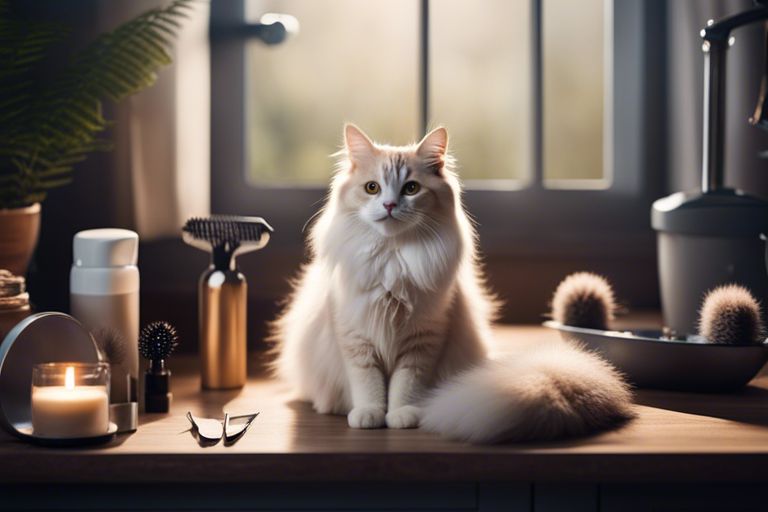
Grooming Techniques Tailored to Different Breeds
Long-haired vs. Short-haired Cats
Once again, grooming techniques play a crucial role in keeping your feline friend healthy and comfortable. In the matter of long-haired versus short-haired cats, the grooming needs vary significantly.
Techniques: For long-haired cats, regular brushing is crucial to prevent matting and tangles. Using a comb with rotating teeth can help tackle knots gently. Short-haired cats may not require as much brushing, but it still helps to remove loose fur and minimize shedding.
Specific Grooming Needs Based on Breed
Tailored: Different cat breeds have specific grooming needs based on their fur type, skin sensitivity, and coat length. For example, Persian cats may require daily grooming to prevent mats, while Siamese cats may need fewer grooming sessions due to their shorter coat.
Breeds: Understanding the specific grooming needs of your cat’s breed is crucial to maintain their overall health and well-being. Consult with a professional groomer or your veterinarian to learn more about the best grooming practices for your cat’s breed.
Establishing a Grooming Routine
Frequency of Grooming Sessions
One key aspect of establishing a grooming routine for your cat is determining the frequency of grooming sessions. The frequency will depend on your cat’s breed, hair length, and shedding patterns. Short-haired cats may need grooming once a week, while long-haired breeds may require grooming every day to prevent matting and tangles. Regular grooming not only helps maintain your cat’s coat but also allows you to check for any skin issues or parasites.
Best Practices for a Stress-Free Grooming Experience
One important practice for a stress-free grooming experience is to start slowly and make grooming a positive experience for your cat. Introduce grooming tools gradually, allowing your cat to familiarize themselves with the sights and sounds of the tools. Use treats and praise to reward good behavior during grooming sessions. Keep grooming sessions short initially and gradually increase the duration as your cat becomes more comfortable with the process.
Understanding your cat’s body language is crucial during grooming sessions. Watch for signs of stress such as flattened ears, dilated pupils, and agitation. If your cat shows signs of distress, stop the grooming session and try again later. It’s important to respect your cat’s limits to ensure a positive grooming experience.
To wrap up
Presently, regular grooming for your cat is vital for maintaining their overall well-being. Not only does grooming help prevent matting and reduce shedding, but it also allows you to check for any abnormalities or signs of illness early on. By incorporating grooming into your cat’s routine, you are not only keeping their coat healthy and shiny but also strengthening your bond with your feline companion. Bear in mind, grooming should be a positive experience for both you and your cat, so be patient and gentle when caring for them.
FAQ
Q: Why is regular grooming important for my cat?
A: Regular grooming is crucial for your cat’s overall health and well-being. It helps prevent mats and tangles in their fur, reduces shedding, prevents skin issues, and allows for early detection of any health concerns.
Q: How often should I groom my cat?
A: The frequency of grooming depends on your cat’s breed and coat type. Long-haired cats may require daily grooming, while short-haired cats can be groomed a few times a week. It’s important to establish a grooming routine that works best for your cat.
Q: What are the benefits of brushing my cat’s fur?
A: Brushing your cat’s fur helps distribute natural oils, prevents hairballs, reduces shedding, and stimulates blood circulation. It also provides an opportunity for bonding with your cat and helps maintain a healthy coat.
Q: How can I groom my cat if they don’t like it?
A: If your cat is resistant to grooming, start slow and gradually introduce them to the process. Use treats, positive reinforcement, and patience to make grooming a positive experience. You can also seek help from a professional groomer or veterinarian for advice.
Q: What are some signs that indicate my cat needs professional grooming?
A: If your cat has severely matted fur, skin irritations, excessive shedding, or hygiene issues, it may be time to seek professional grooming services. Groomers have the expertise and tools to address these issues safely and effectively.
